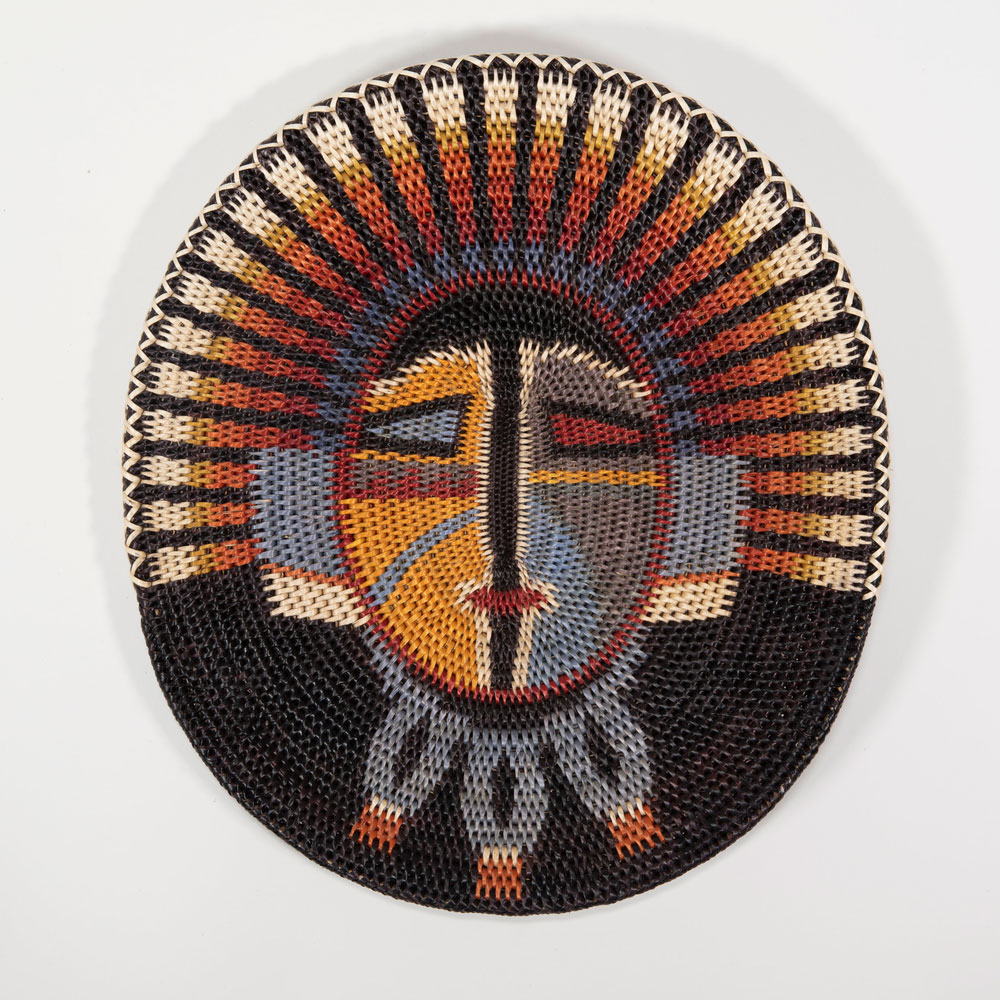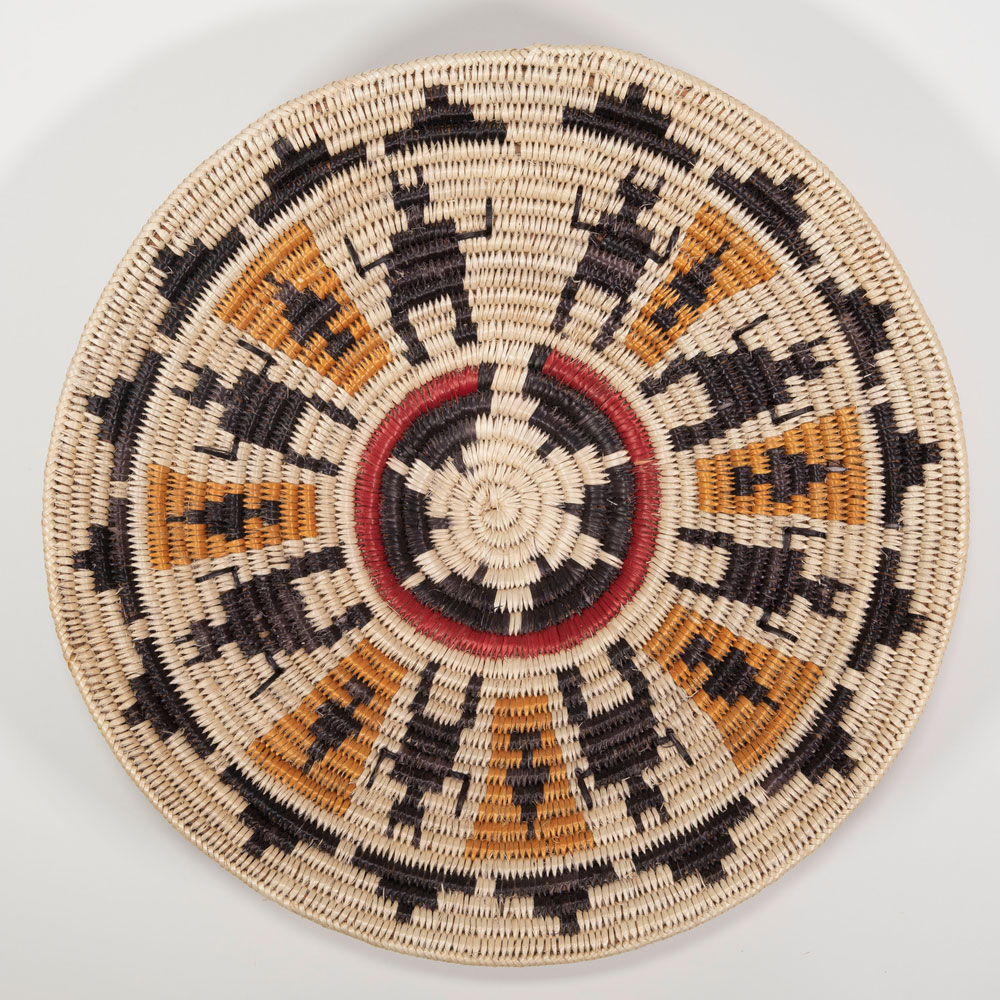This post was originally published on the Natural History Museum of Utah’s blog.
“Weaving is a gift,” says Diné (Navajo) fourth-generation basket weaver Joann Johnson. “I learned it from my mother (Betty Rock Johnson), who learned it from her mother, who learned from her mother, my great-grandmother Ida Bigman. I feel close to her when I am weaving a basket.” The basket itself could represent any number of ideas or styles, from Monument Valley to the twilight landscape, but the very process of creating a basket is a Navajo tradition that threads through family and history.

PHOTO CREDIT: Artist: Elsie Holiday
Elsie holiday weaves a design of a masked and radiant Jóhonaaʼéí, (Sun Carrier) portrayed with dignity and strength. The Sun wears three heavy necklaces made of turquoise, a sacred stone representing power and status. Woven from Sumac.
The Natural History Museum of Utah is home to a large collection of Navajo baskets. “Many people don’t often understand the role of a museum, thinking we are time capsules. But what we really are doing is trying to preserve Native cultures, and also how they grow, how they change, what makes them grow and change,” says NHMU’s Assistant Anthropology Collections Manager Anne Lawlor. Baskets made by weavers such as Johnson, Elsie Holiday, Agnes Gray, Sally Black, and many others are not remnants of the past, but vibrant parts of ever-changing stories—tales highlighted in the NHMU’s Navajo Basket Explorer.
The baskets themselves are stunning. Lorraine Black’s Big Monster Basket, for example, displays the tension between powerful, fierce monsters and the protective forces that ended their terror. The Three Necklaces Basket by Elsie Holiday, by constrast, is a striking depiction of Jóhonaaʼéí (Sun Carrier) wearing three turquoise necklaces which balances both light and dark. And then there’s Kee Bitsinnie’s Illusion Basket, which draws your eye towards the center as the geometric patterns of the baskets seem to move around them. That’s just a small sampling of the amazing artistry on display in the Navajo Basket Explorer.

PHOTO CREDIT: Artist: Lorraine Black
Several monsters rampage in Diné (Navajo) stories, but Yéʼiitsoh (Big Monster) was the monster of all monsters, the most legendary and the most feared. Lorraine Black weaves a traditional ts’aa’ (ceremonial basket) motif in the center of her work and surrounds it with depictions of dark and fearful monsters. Woven from Sumac.
Each basket is far more than just an object. There is so much history and inspiration literally threaded through each and every one, a prompt to consider what’s connected to the designs, colors, and patterns on each basket. A Diné story woven into a basket is not just the tale itself, but part of an entire storytelling tradition in which emphasis and different versions of that tale matter. “As basket weavers incorporate representations of stories in their designs,” the online gallery reminds us, “they carry these traditions forward in a new way.” Stories change in their telling, whether in words or literally woven together.
